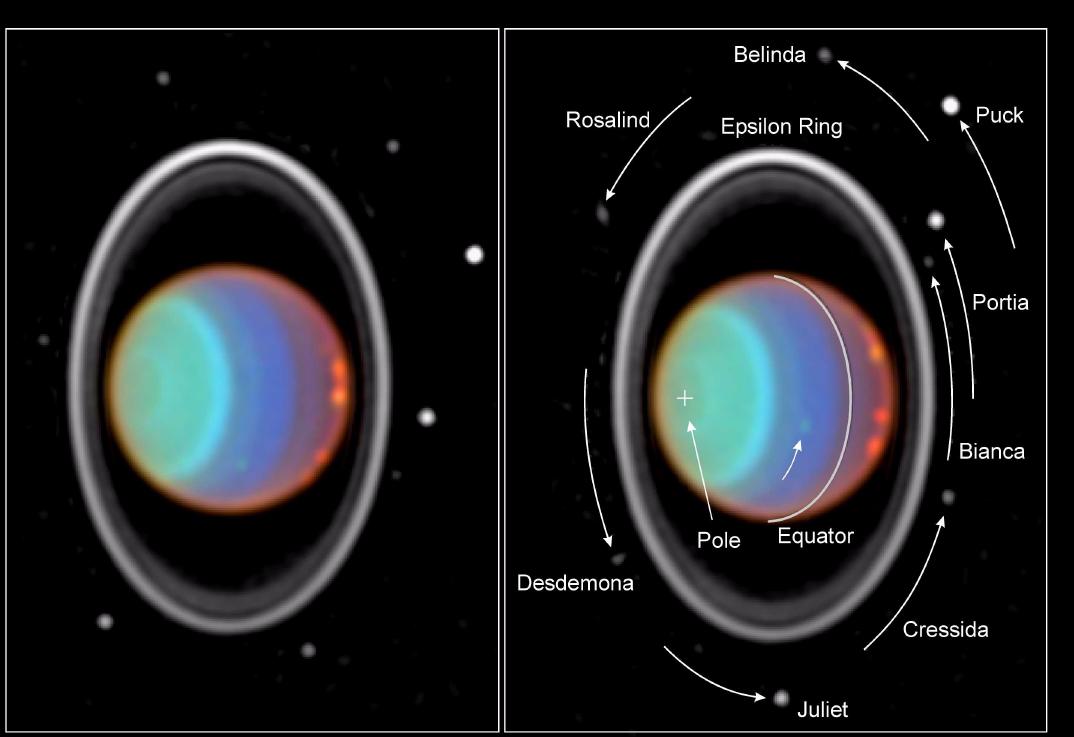[/caption]
The Roche limit is named after French astronomy Edouard Roche, who published the first calculation of the theoretical limit, in 1848. The Roche limit is a distance, the minimum distance that a smaller object (e.g. a moon) can exist, as a body held together by its self-gravity, as it orbits a more massive body (e.g. its parent planet); closer in, and the smaller body is ripped to pieces by the tidal forces on it.
Remember how tidal forces come about? Gravity is an inverse-square-law force – twice as far away and the gravitational force is four times as weak, for example – so the gravitational force due to a planet, say, is greater on one of its moon’s near-side (the side facing the planet) than its far-side.
The fine details of whether an object can, in fact, hold up against the tidal force of its massive neighbor depend on more than just the self-gravity of the smaller body. For example, an ordinary star is much more easily ripped to piece by tidal forces – due to a supermassive black hole, say – than a ball of pure diamond (which is held together by the strength of the carbon-carbon bonds, in addition to its self-gravity).
The best known application of Roche’s theoretical work is on the formation of planetary rings: an asteroid or comet which strays within the Roche limit of a planet will disintegrate, and after a few orbits the debris will form a nice ring around the planet (of course, this is not the only way a planetary ring can form; small moons can create rings by being bombarded by micrometeorites, or by outgassing).
Roche also left us with two other terms widely used in astronomy and astrophysics, Roche lobe and Roche sphere; no surprise to learn that they too refer to gravity in systems of two bodies!
More to explore on Roche limits: Saturn (NASA), Roche Limit (University of Oregon), and Tides and Gravitational Locking.
The Roche limit is key to several Universe Today stories, among them Phobos Might Only Have 10 Million Years to Live, Ancient Solar Systems Found Around Dead Stars, and Observing an Evaporating Extrasolar Planet.
Check out these Astronomy Cast episodes for more on Roche limits: Tidal Forces, Tidal Forces Across the Universe, and Stellar Roche Limits.

